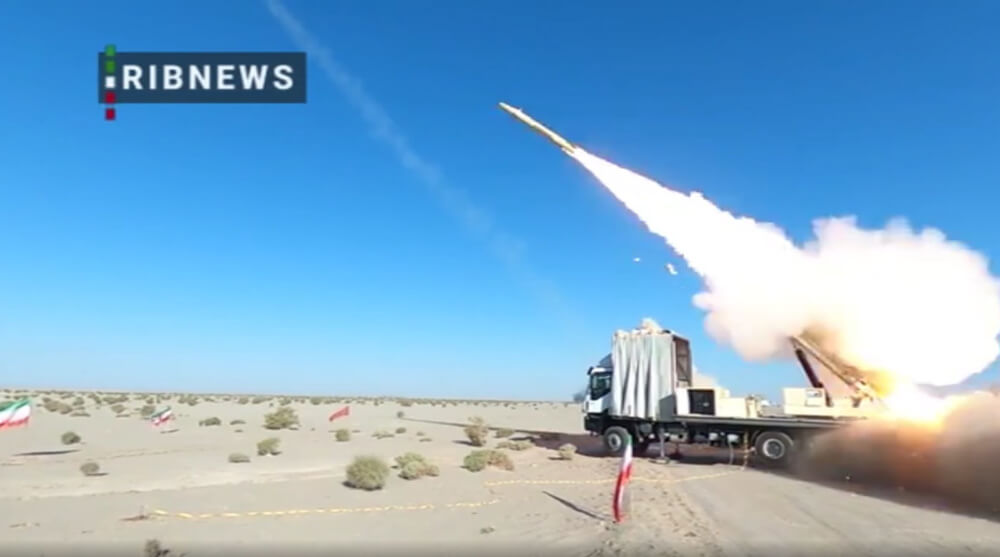The US-made High Mobility Artillery Rocket System (HIMARS) has attracted massive global interest due to its performance in Ukraine, which is believed to have helped the Ukrainian military repel Russian forces.
India’s 1st Prototype Of ‘Mountain Tank’ To Be Rolled Out By 2023; L&T Says Selected As Development Partner
Iranian Suicide Drones Used By Russian Military Are Becoming A ‘Big Headache’ For Ukraine In ‘Recaptured’ Northeast
But, experts now believe that Iran conducted a military exercise in which it tested its domestically made Fath 360 satellite-guided missile, similar to HIMARS.
Iran recently carried out a major ground troops exercise known as Eghtedar 1401. The exercise demonstrated Iran’s extensive weaponry while holding massive military operations in the desert.
During the exercise, the country’s military tested Fath 360 short-range surface-to-surface missile, according to a report from Fars News, and the system was used in combined arms exercises near Nasrabad, Isfahan.
The missiles can be launched at Mach 3, then connect to satellites for quick homing before striking their targets at Mach 4, the state-run Tasnim News reported.
It is difficult to determine the missile’s efficacy, but Iran appears to be confident that its new missiles are effective. It also launched a Fajr-5 missile during the exercise.
Tehran asserts that the Fath 360 has exceptional levels of precision and can track and destroy hostile targets.
Iranian commanders said, “the guidance system of this missile is such that it communicates with several satellites every second and immediately corrects its course. Also, this missile is fired with a six-projectile launcher and is a rocket; long-range, accurate, and strategic.”

The Fath 360 has a diameter of 30 centimeters, a weight range of 850-1,100 kilograms, a warhead of 150 kilograms, and a range of 75 kilometers. It is four meters long. It could be deployed on a truck-based launcher because of its lightweight and relatively small dimensions, with six, four, or two-round launch canisters available.
The Iranian Army Ground Force established a missile unit in February and announced plans to update existing gear and add new equipment suited for quick-response operations.
Iran has made significant progress in manufacturing a diverse range of indigenous weaponry in recent years. This even allows their armed forces to be self-sufficient in the armaments sphere.
The country has particularly made tremendous progress in the drone industry, to the point where it has recently exported drones to Russia to aid it in its battle in Ukraine. These drones are currently demonstrating their capabilities in combat.
Iranian drones are small and fly at a low altitude, which makes it difficult for Ukrainian air defense systems to spot them.
A Ukrainian artillery commander revealed that Iranian drones had damaged two BTR armored infantry vehicles, two 122 mm self-propelled howitzers, and two 152 mm self-propelled howitzers in the brigade’s operational area alone.
As of now, it appears that the majority of Iranian drones have been deployed in the Kharkiv region, where the 92nd brigade and other Ukrainian forces conducted a counter-offensive this month.

Iran’s Answer to HIMARS?
In his piece for Asia Times, defense expert Gabriel Honrada noted that the specifications of Fath 360 are roughly equal to HIMARS on paper.
He pointed out that the M31 GMLRS rocket given by the US for Ukraine’s HIMARS units can carry a 90-kilogram unitary warhead up to 70 kilometers at Mach 2.5. It could be fired from either the six-round HIMARS or the bigger 12-round M270 MLRS that the UK has given to Ukraine as military support.
He added that the HIMARS, a missile launcher mounted on a truck, is more maneuverable than its heavier-tracked cousin, the M270, and it is also easier to operate and repair than the M270.
In a similar line, these strengths seem to be mirrored in Iran’s Fath 360 system, which lends itself to Iran’s theory of asymmetric warfare, he noted.
In early September, Ukraine had just 26 HIMARS launchers and an unknown amount of M31 rounds. However, Ukrainian troops have benefited from HIMARS’ speed and mobility since they can reload quickly and avoid Russian counter-battery fire.
Similarly, the Fath 360’s light-wheeled design would make it easily maneuverable in the mountainous, desert, and urban environments of the region, according to Honrada.
Ukraine’s HIMARS batteries were able to target Russian command centers and ammo stores largely as a result of US intelligence. The expert went on to suggest that it is possible that Russia’s GLONASS satellite navigation system would be used by Iran’s Fath 360.
- Contact the author at ashishmichel@gmail.com
- Follow EurAsian Times on Google News




